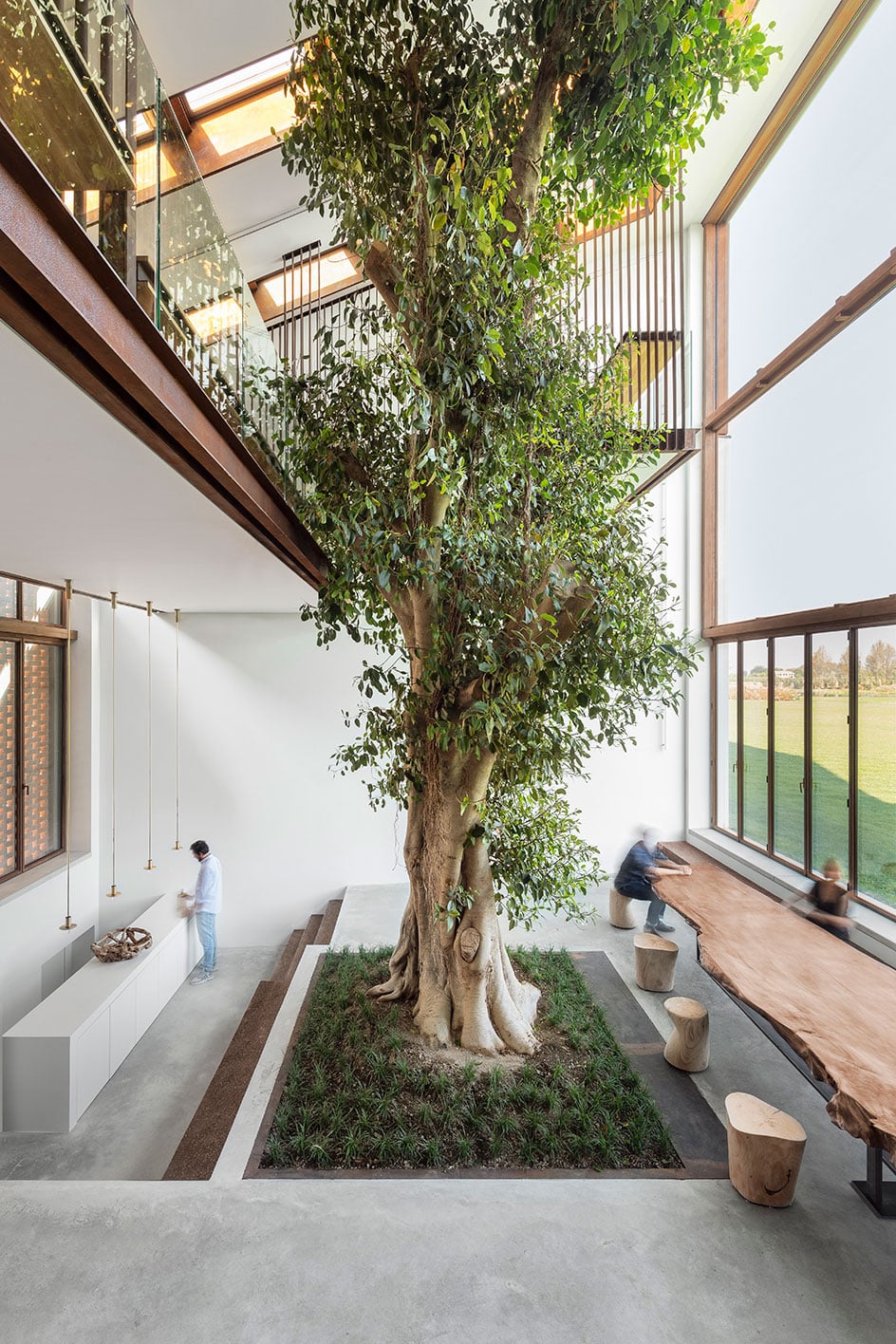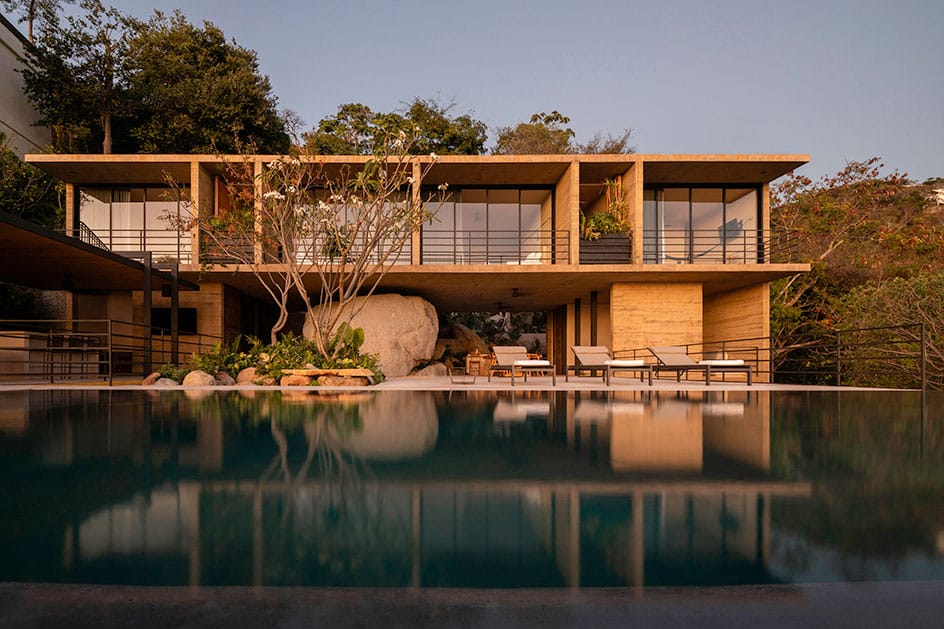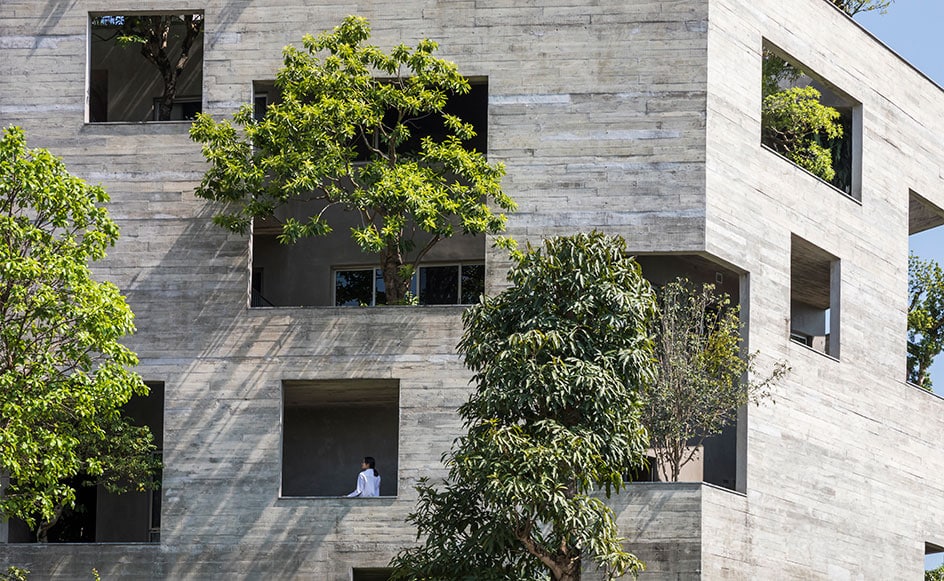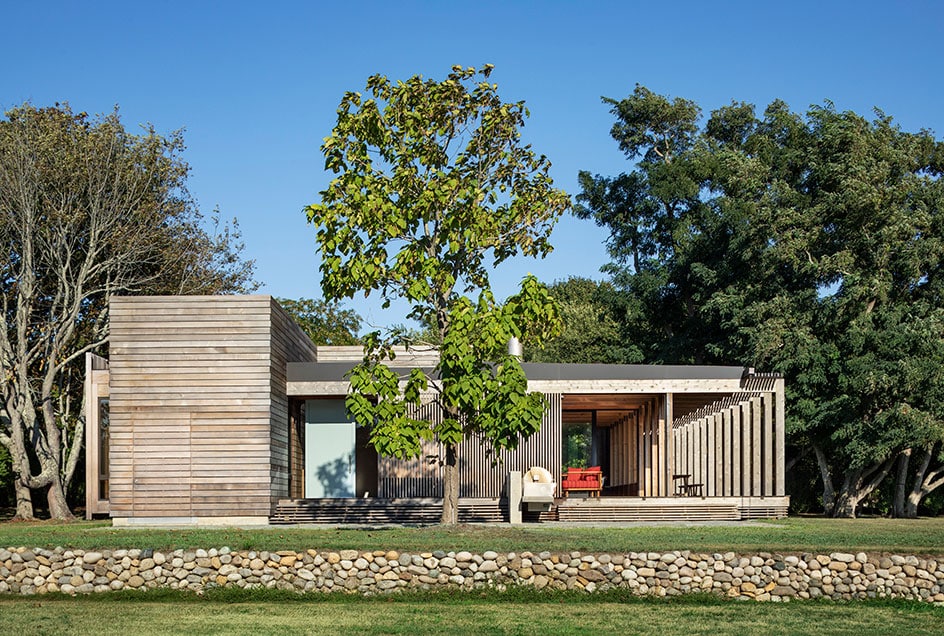
A biophilic approach to design sees architects finding innovative ways to intertwine domestic spaces with the natural world.
Biophilia, literally the love of living things, is used to define our innate inclination to nature. In the 20th century, psychoanalyst Erich Fromm argued that contact with other living beings provides healing and comfort, while biologist Edward O Wilson, who is best known for coining the term biophilia, wrote about how this affinity towards nature is the essence of humanity.
In design, biophilia has a broad array of applications. Early examples of decorative arts and interiors reveal an ever-present love of nature through plant and animal depictions. Water is worshiped in ancient Indian and Moorish architecture, and it takes a central position again in Baroque fountains. Modernist architect Frank Lloyd Wright, meanwhile, envisaged buildings that were integrated with their natural surroundings, full of plants, and inspired by nature.
Most recently, mindfulness around the climate crisis has led to the embrace of natural, sustainable design choices, and interest around biophilic design has deepened in light of mounting scientific evidence that exposure to nature enhances health and wellbeing. The pandemic lockdowns played a role, too: access to and engagement with nature became paramount for wellbeing—even if it was simply inside homes.
Amid uncertainty, we turn to nature. New York’s Museum of Modern Art’s recent exhibition, Emerging Ecologies: Architecture and the Rise of Environmentalism, exemplified the predominance of the natural world in American architectural design of the 1960s and 1970s. The Denver Art Museum’s show, Biophilia: Nature Reimagined (closes August 11), focuses on experiments in the use of once-living materials, such as baskets made with agave fibre, creosote, and jute by design studio Aranda\Lasch; and biomimetic design, such as the Nana Lure Chandelier by lighting design studio Pelle, reminiscent of banana fronds and made of hand-painted cast-cotton paper.

Biophilic architecture can mean different things. Buildings focused on the natural context of the site and the wellbeing of the users may well be considered biophilic. For Mexican architect Gabriela Carrillo, those aspects are central to her work. “I possess an innate inclination to incorporate the landscape into my projects at various scales,” she says.
Casa Piedra (Stone House), by her practice Taller Gabriela Carrillo, was built in 2020 around a giant granite outcrop in the hills of Acapulco, on the southern Pacific coastline of Mexico. Rather than being separate from nature, the home is intertwined with it. A cavernous entrance stairway built into the rock formation gives way to an open entertaining area overlooking the bay. Here, the large natural boulder takes centre stage, giving the illusion that it is holding up the house. Cross ventilation and thoughtful orientation reduce the overall energy consumption, which is supplemented by renewable energy through photovoltaic panels, and the use of water treatment systems further reduces the home’s environmental impact.

In Vietnam, Vo Trong Nghia (VTN) Architects has been creating biophilic homes as a way to re-engage with nature in high-density cities. The firm’s country-wide residential series “House for Trees” responds to Vietnam’s rapid urban growth by bringing endemic greenery to homes and, in turn, improving the lives of city dwellers. One of these, a house from 2020 built in the northern coastal city of Ha Long, hosts tropical trees across all six stories of its facade. By locating these in a zone between the interior living spaces and the external brise-soleil wall, a naturally controlled environment is created that provides ventilation and shading—both vital in tropical climates.
On the other side of the tropics, in the city of Goiânia in central Brazil, Expedito Bezerra and Lucas Panobianco of architecture studio Bezerra Panobianco were asked to design a house that would remind their client of a coastal oasis. Completed in 2023, Oásis Ventú “is not a house with a garden, it is a garden house,” the architects say. A sinuous bahia marble path running through this central garden connects the surrounding living, dining, and rest spaces. The boundary between inside and outside is blurred; solid barriers are replaced by gauzy linen drapes and lightweight shutters. Greenery and natural materials such as brown storm granite are prevalent throughout the space.

Biophilic homes need not be tropical, of course. Harbored between the twin forks of Long Island, about a three-hour drive east of New York City, Shelter Island hosts a biodiverse habitat with thousands of acres of protected wetlands. For a family of four who had spent time on the island for almost 10 years, KoningEizenberg Architecture designed a vacation retreat in 2022 that could withstand muggy summers and bitingly cold winters, and feel a natural part of its surroundings.
Nestled in between the trees, the 2,500 sq ft house is barely visible from the road. A wood porch extends the length of the house facing the water. Most of the house is built in uncoated cedar wood, a material that thrives in changing weather conditions and, by nature, has a low carbon footprint. “Inside, the wood is growing richer and deeper in colour as it ages; outside, it is quickly turning grey,” say the architects Julie Eizenberg and Hank Koning. Privacy was valued without losing the intake of natural light and outdoor views on to nature. Clerestory windows bring sunlight into the ceramic-tiled kitchen, while wood slats let in the light without compromising the views in the west-facing rooms.
“When we think about biophilia, we have to consider whole ecosystems—plants, insects, microbes, and animals all sharing a living space,” says Italian architect Carlo Ratti. “Thinking about the organisms that occupy the built environment, and about how the built environment can act like an organism, is a big part of our work.” An old farmhouse outside of Parma in Italy’s Emilia-Romagna region was transformed by Carlo Ratti Associati in 2021 into a family home. Dubbed “The Greenary,” the house is built around an enormous 60-year-old ficus tree that “actively contributes to the life of the household,” Ratti says. Skylights, floor-to-ceiling glass windows, and pierced brick walls let light in, while a cantilevered corten steel staircase allows for visual continuity throughout the central triple-height space.
Biophilic architecture is as much about human wellbeing as it is about respect for biodiversity. It is “minimal but impactful actions,” as architect Carrillo says, that will eventually deliver mindful adjustments in the design of the built environment.
Photos: Delfino Sisto Legnani and Alessandro Saletta, DSL Studio; Rafael Gsamo; Hiroyuki Oki; Lucas Panobianco; Michael Moran Photography.
POSTED WITH PERMISSION. COPYRIGHT SOTHEBY’S. Click to read original article.

